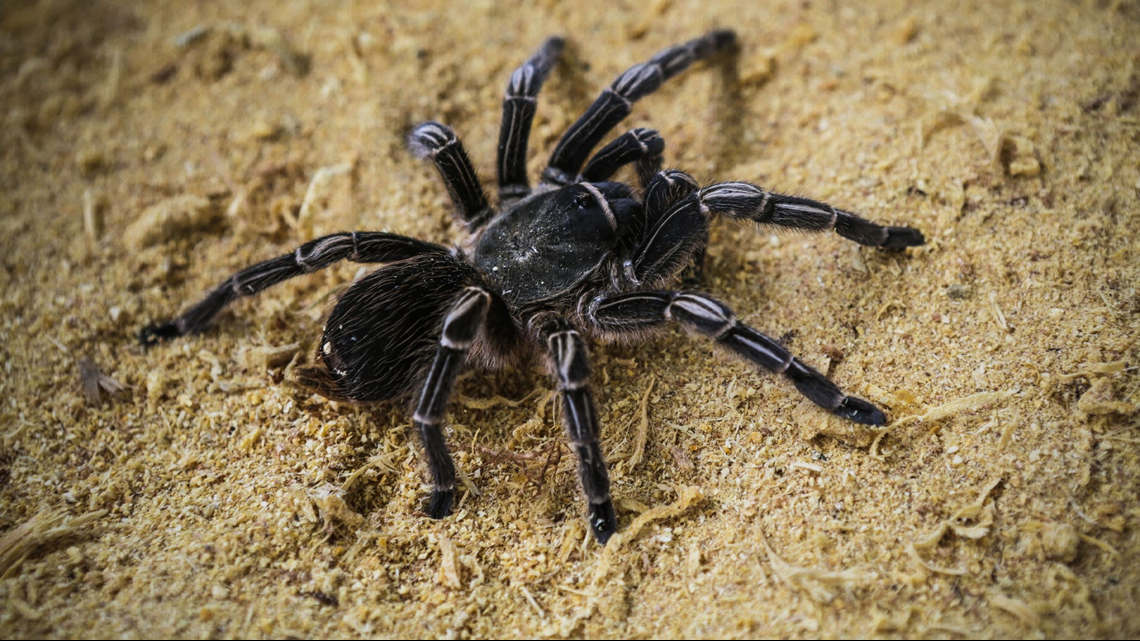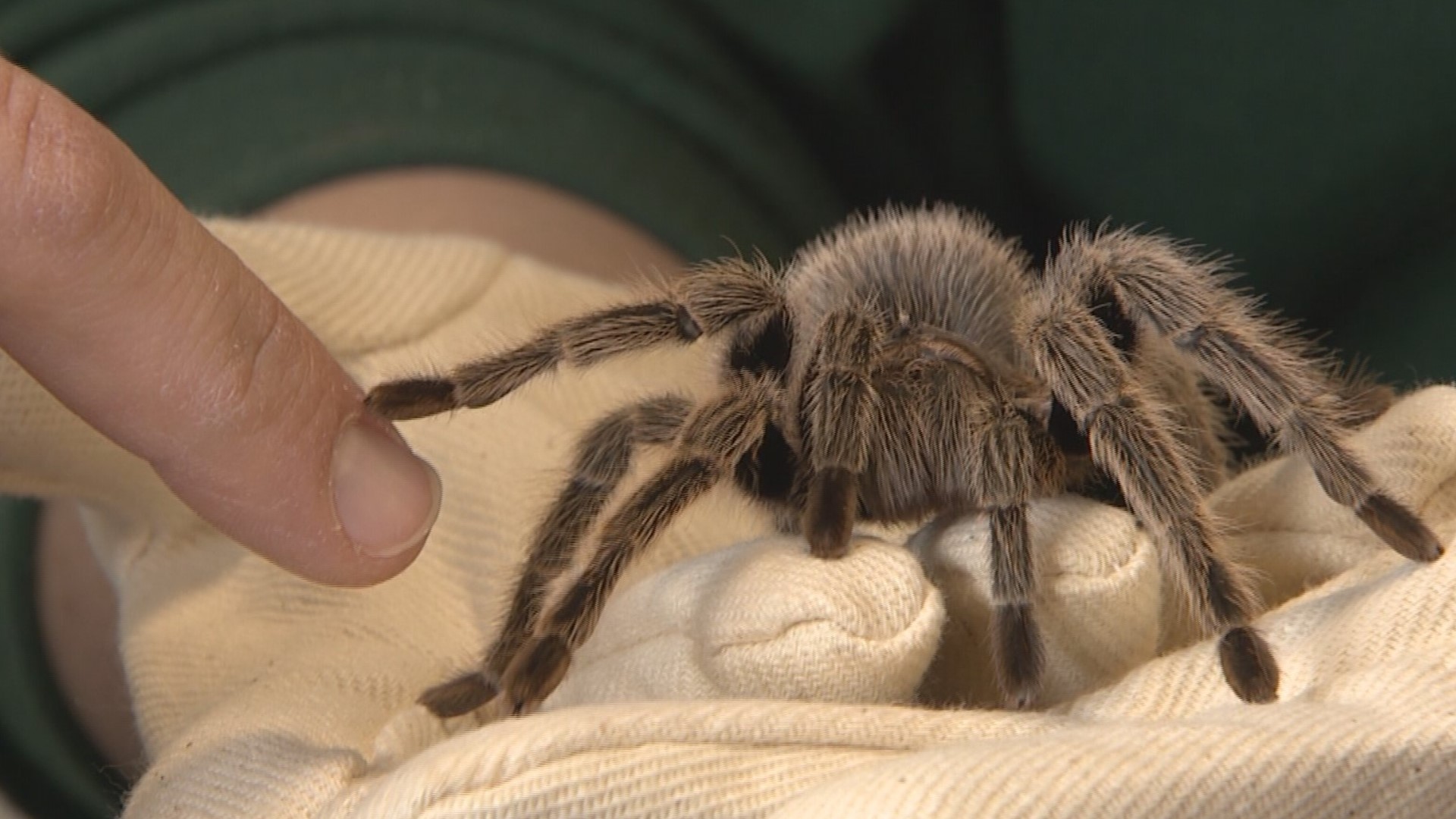SEATTLE — "Hi friend," says Woodland Park Zoo's Erin Sullivan as a palm-sized Chilean Rose Tarantula steps off a rock and onto her hand. "Friend" is not how many of us would characterize a hairy spider with fans the length of a nickel. She's not against using giant versions to decorate for Halloween, but Sullivan says spiders get a bad rap.
"They really do have the sweetest little feet. Like you can shake hands with her if you want." Which I do. "She is high-fiving you!" Which she is.
I then hold her myself as Sullivan gently nudges her from the back, where the silk comes out. I can barely feel her through the gloves, as she doesn't weigh enough to notice. "We wear the gloves not for our protection but more for hers," Sullivan says.
When they introduce someone to spiders at Woodland Park Zoo, they often start by each drawing one. They then learn about a spider's two main body parts (the abdomen and the cephalothorax, the combination of the head and thorax). And then the multiple eyes, the feet and what can appear to be two extra legs, shorter, in front. "These are the pedipalps," Sullivan points out.
A male has more pronounced pedipalps. And in nature, as ever, it's all about sex. "That's what makes it a boy. He basically lays down some sperm. Soaks it up in the pedipalps. And then he's considered charged." You'll have to do your own research to find out what happens next because I, uncomfortable, quickly change the subject.
I ask what are the two antenna-like feelers coming out of the back of the abdomen. "Those are the spinnerets where the silk comes out," says Sullivan. She then tells us "silk" is what it's called coming out. It only becomes a "web" when the spider forms it into a prey-catching net.
Armed with all this arach-knowledge, I start to realize why Sullivan starts this way: "Learn a little bit and turn that fear into fascination. And be less afraid of them when they're walking across their living room floor and be a little more in awe of them."
She goes on to explain 5 things about spiders many people believe that are actually false.
5 spider myths debunked


1) MYTH: You SWALLOW eight spiders a year!
"Is this true?!" I say. "Yes!" Sullivan laughs sarcastically, clearly amused by the notion that one could actually reach such a conclusion.
"It's impossible to know. There's also another myth that says you're never more than three feet away from a spider. I appreciate the concept of both of those, which is a little bit of, 'Hey, spiders are out there. They're going to be in your house. Be aware of it'," she concluded, "But I really doubt that you are swallowing that many spiders. It's not in their best interest either."
2) MYTH: Spiders WANT to bite me!
"They are an animal that can bite. They don't want to but they can," Sullivan explains.
"But so do squirrels," I say.
"True," Sullivan continues, "It's not in their best interest to try to bite us. We're bigger."
3) MYTH: That's a SPIDER bite!
Not likely, she says. "There's just not that many medically significant spiders in the area. And not that many biting spiders either. And there are lots of other things that can cause bites. And it's just impossible to know. You can't actually look at the bite and know."
She says spiders unfairly get blamed first.
4) MYTH: Spiders are coming OUT OF MY DRAIN!
No, they're not.
"Those are male house spiders. And they're just out lookin' for love. And they get thirsty. So they go to your bathtub where there's usually a little water around the drain. But they can't get out."
She says in her house, she throws a towel over the side of the bathtub. This way, when spiders get in, they have a way to get out.
5) MYTH: Daddy-longlegs are DEADLY!
Only if you happen to slip on one and die from a head injury. But they don't have lethal venom that could kill you if only their fangs were long enough.
Sullivan says most of us are referring to a Harvestman. "It's an arachnid, but not a true spider. It only has one body part. They don't even have fangs, so that's not even a possibility."
So consider yourself spider-cated. And Sullivan is sure to point out that, though she works with spiders daily, we all have an innate fear, given how they look and move. "I will never forget a time, I was working in the bughouse. And I moved a flower pot and I screamed. I jumped out of the way because there was a spider I was not expecting. And I definitely got teased for that. And I was like, hey healthy respect!"
KING 5's Evening celebrates the Northwest. Contact us: Facebook, Twitter, Instagram, Email.

